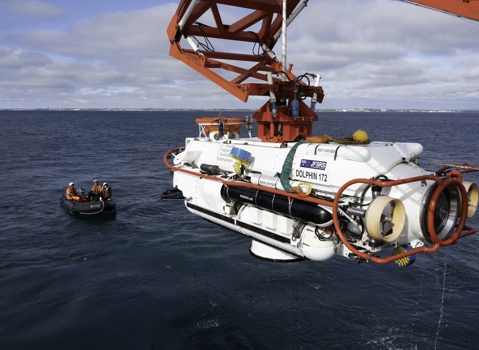A conventional Flyaway SRV system offers the best environmental envelope and capacity of the global systems, however at the cost of the longest deployment time.
Able to deploy globally and rescue in the harshest of environmental conditions, the Flyaway SRV system must be complemented with a well trained and exercised emergency response capability to ensure it will be on site wherever and whenever required.
Further Information
- Maximum capability; ability to operate at the fullest extent of depth and current and adapt to changing rescue scenarios.
- Maximum sortie capacity and minimum sortie time.
- Low time to complete rescue, particularly for DISSUBs with larger crews.
- No Vessel of Opportunity (VOO) DP requirement
- Requires high crew skill level and corresponding standard of training and upkeep.
- More complex and expensive to maintain than a bell.
Vehicle
| Rescue Capacity | 16 |
| Depth | 400m* |
| Classification | Lloyds Register |
Launch & Recovery System
| Load Rating | 25 tonnes |
| Operating Sea State | 4** |
| Classification | Lloyds Register |
TUP
| Capacity | 72+ |
| Classification | Lloyds Register |
ROV
| 1000m intervention ROV as standard |
Ancillary Equipment
| Standard | Tracking system, surface comms, workshop/spares container |
| Optional | Generator, mating targets, side scan sonar, ELSS pods and pod posting target |
Deck
| Deck Footprint | 475m2 |
Transport
| Trucks | 14 |
| Aircraft (small items) | 777-200F, 747-400F, C130, Embraer C-390 |
| Aircraft | A400M, IL-76, C17, AN-124 |
* Option available of depth rating up to 610m.
** Option available up to sea state 6.
+ Other TUP capacities available on request

Contact us for more information



 Read James Fisher and Sons plc's latest Annual Report
Read James Fisher and Sons plc's latest Annual Report